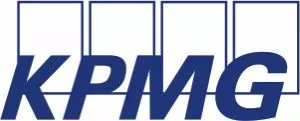Introduction
Migration is a fundamental part of human nature by virtue of people moving from one place to another for various reasons, including poverty, unemployment, famine, political and religious crises, natural disasters and so on. Essentially, migration is the process of temporary or permanent relocation of a person from his or her place of primary abode to another, in search of better living conditions, family reunification, studies or other reasons.1
The International Organization for Migration (IOM) defines a migrant as a person who moves away from his or her place of usual residence, whether within a country or across an international border, temporarily or permanently, and for a variety of reasons. According to the IOM, the term includes a number of well-defined legal categories of people, such as migrant workers; persons whose particular types of movements are legally-defined, such as smuggled migrants; as well as those whose status or means of movement are not specifically defined under international law, such as international students.2
The Nigeria Immigration Service (NIS) Migrant e-Registration guidelines refer to any person who is not a citizen of Nigeria as a Migrant.
This publication would examine the utility of the Migrant e-Registration tool in curbing illegal migration in Nigeria and possible ways to optimize it to achieve this purpose.
Migration Management
Migration is closely linked to globalization which has continually enabled shrinking of borders between the world's markets. It also presents countries with many opportunities in furtherance of the development of their economy given the various reasons such as tourism, business, skilled migration etc. for which people migrate. For instance, the United States of America, Spain, and France in the year 2019 earned 214.1, 79.9, and 63.8 billion US dollars from tourism, in that order3.
Similarly, tourism creates 9 jobs per tourist in Bangladesh, 2 jobs per tourist in India, and 1 job per tourist in Venezuela and Ethiopia according to Forbes4. Countries such as the United States of America and Canada have also enjoyed population, economic, and cultural support via skilled immigration. According to the Canadian 2020 annual immigration report5 to parliament, immigration is a key driver in advancing Canada's economy and growing its working population, and Canada projects that this would remain so in the future.
Nigeria has also been a beneficiary of migration in terms of improvement of skills of its working-class population and economy through jobs created with the help of excellent pro-Nigerians immigration related programs and policies. For instance, the Nigerian Immigration policy on the Expatriate Quota6 scheme mandates companies to employ at least two Nigerians to serve as understudies to every non-ECOWAS national employed. The company is also expected to provide enabling environment for transfer of specialized skills and knowledge to Nigerians through an understudy program.
To fully enjoy the benefits of migration while addressing its challenges, countries have been obligated to make policies that would attract and admit only the demography of people that would be beneficial to them. For instance, a country will only make money from tourism if it admits tourists who can afford to pay for their accommodation, food, and the touristic activities they intend to engage in during their period of stay in the country. Conversely, it would be counterproductive and economically harmful to the country when admitted tourists do not have enough funds to pay for their accommodation and food either because they did not bring enough money, or they overstayed.
The immigration space in Nigeria is under the purview of the Federal Ministry of Interior (FMI) while the NIS acts as enforcer of extant regulations in the space. Typically, the NIS monitors activities related to movement of people across the border and enforces the approved eligibility conditions for admittance of foreigners into Nigeria through all ports of entry. Based on its core mandate, the NIS is responsible for control of persons entering or leaving Nigeria; issuance of travel documents to bona fide Nigerians in and outside Nigeria, issuance of residence permits to foreigners in Nigeria, border surveillance and patrol, and enforcement of extant immigration related laws and regulations. Also, it tracks movements and activities of foreigners within Nigeria to ensure compliance with the purposes of visit declared before entry into the country.
In order to fulfil its statutory mandate, the NIS has had to deploy and adopt several tools and policies such as the biometric visa project, digitization of the Visa on Arrival (VoA) process, Migration Information and Data Analysis Systems (MIDAS), Migrant e-registration, Nigeria Visa Policy 2020, database harmonization with National Identity Management Commission, verification of corporate and foreign individual tax payment for issuance and renewal of residence permit etc., over the years.
The Migrant e-Registration Tool
In July 2019, the NIS commissioned a migrant e-registration center to flag off the biometric registration exercise for all migrants in the country. This exercise was geared towards addressing the security challenges that had continued to plague the country and facilitating the integration of migration management in Nigeria especially in terms of closing the data gaps with the legal and illegal migrants in the country. It is worthy of note that the migrant e-registration exercise rode on the back of Nigeria's participation at the United Nations' Intergovernmental Conference to Adopt the Global Compact for Safe, Orderly and Regular Migration at Marrakech, Morocco in December 2018.
As a signatory to the Global Compact for Safe, Orderly and Regular Migration7, Nigeria has the mandate, amongst other grails of migration contained in the objectives for safe, orderly and regular migration, to collect and utilize accurate and disaggregated data as a basis for evidence-based policies. Nigeria is also expected to ensure that all migrants have proof of legal identity and adequate documentation; address and reduce vulnerabilities in migration, strengthen the transnational response to smuggling of migrants, manage borders in an integrated, secure and coordinated manner etc. In accordance with the foregoing objectives and as described in the NIS migrant e-registration guidelines, the migrant e-registration exercise was meant to be an effective tool for credible, reliable, and comprehensive database on migration for Nigeria.
Utility assessment of the Migrant e-Registration Tool
The migrant e-registration exercise captures biographical information of migrants such as personal information, residency in and outside Nigeria, immigration status in Nigeria, employment history, next of kin, thumbprint, photographs etc. The program was meant for migrants deemed eligible; adult non-Nigerians with intent of staying in the country for more than 90 days and who are without diplomatic covering. They were required to visit a migrant registration center in their state of residence where their biometric data would be captured on the NIS database. However, certain categories of people were exempted from the migrant biometric exercise - persons under the age of 18 regardless of how long they intend to stay in Nigeria, persons enjoying diplomatic immunity, and persons staying for less than 90 days in the country.
However, there are gaps that could be exploited by illegal migrants who come into Nigeria on the short visa option to gain access to the country and stay on thereafter. In the same way, illegal employment of teenagers below the age of 18 and falsification of age to appear under 18 are areas of concerns emanating from the eligibility conditions set for the migrant e-registration exercise
Limitation of the Migrant e-Registration Tool
It is commendable that creation of centers in all the States in Nigeria for Migrant e-registration facilitated the documentation of previously undocumented immigrants living in the country and those who may not have been captured by MIDAS, either due to long stay within Nigeria before the advent of the tool or clandestine crossing of the borders.
The MIDAS is expected to account for everyone who enters Nigeria through any of the country's legal port of entry but is it integrated with the main NIS migrant database? Also, the eligibility conditions utilized in the migrant e-registration exercise leaves a huge gap in accounting for the number of migrants in country and poses certain exposures from a security perspective.
The MIDAS ought to double as a migrant e-registration point as it will serve the purpose of efficiently capturing the expatriate in its migrant database, alerting the local government immigration offices of the potential entry of new foreigners to their territory, and thereby facilitating tracking and monitoring exercise for security purposes. For the purpose of security and curbing of illegal migration, there is need for complete, specific, consistent, continuous, and live information on migrants in the country regardless of their age bracket, status and intended length of stay in any part of the country.
The various migrant registration centers at the NIS headquarter, zonal offices, and commands may be effective for biometric capturing of migrants who willingly visit the centers, it is counterproductive for actual monitoring of migrants. The migrant registration centers should be decentralized with facilities available at the NIS offices located within all the local government, in Nigeria. These offices are closer to residents and lodgers in their respective local governments and should serve as primary data collection centers for migrants.
Also, the Migrant registration database does not appear to be integrated with the country's CERPAC8 production center database, as foreigners with resident permits - CERPAC forms and cards - are required to fill forms containing information that had already been captured during their regularization of stay and renewal of residence permit processes. For consistency in the data gathering process and risk mitigation in terms of data manipulation, the CERPAC database should be linked to MIDAS and the migrant registration processes. In essence, the databases should feed information to one another. The information of a migrant captured at the MIDAS point should reflect in the migrant registration database and the CERPAC database if the migrant has come in with an employment/residence visa.
Other Useful Tools for Migrant e-Registration
Electronic filing of the Expatriate Monthly Returns (EMR): The NIS mandates all companies, with foreigners in its employ or facilities to file a report, Expatriate Monthly Returns (EMR), at the state command office, zonal head office and headquarters of the NIS. Hotel and other establishments that provide lodging services are also required to file returns in respect of the foreigners who lodge in their facility, at end of each month.
Currently, the EMR is paper based and its template vary slightly from office to office. It is evidently hard and inefficient to track migrant information rummaging through a pile of papers, some of which are illegible and badly formatted, from thousands of companies from around the state or country. Also, it is ineffective feeding paper-based information into an electronic database, for instance the migrant database. This current filing process also means that the monitoring at the local government level, the closest level to the migrant, may be non-existent as the NIS offices there have no information on the migrants in their jurisdiction.
An electronic filing system addresses all these problems. It harmonizes the template, captures all migrants in the organization regardless of immigration status and accessible to NIS officers at all levels of the command chain and can easily feed into the migrant database automatically.
Integration of Border Management Tools to the Migrant Database: Relevant immigration offices at different levels of the command chain should be able to access entry and exit information of migrants sojourning or residing, or who have previously stayed in their territories. For this reason, the migrant database should be re-designed to be able to receive entry and exit feeds from the border management tools installed at all the country's ports of entry and exit.
Conclusion
The goal of having a robust database for all migrants in Nigeria via the migrant e-registration scheme is a laudable one. However, there is room for improvement in terms of effectiveness of the tool in tackling illegal migration and insecurity issues in the country. There is also the need for efficiency in data gathering which is why harmonization of the data entry points is advisable to facilitate data collection for the government and provision of same for the migrants. Migrants who had just undergone the MIDAS biometric registration at the airport should not be required to visit another center managed by the NIS for the purpose of a second migrant biometric registration.
Amidst concerns of growing insecurity in a country like Nigeria, the migrant registration is a step in the right direction. Thus, the tool must be consistently optimized to achieve the best results in managing the entry, sojourn, residency, and exit of migrants in the country.
Effective and well-tailored policies on migration management that are in line with international standards and global best practices, would help to shape the immigration space of a country to ensure that migration contributes positively to the betterment of the country.
Footnotes
1. https://publications.iom.int/system/files/pdf/national_migration_policy_2015.pdf
2. https://www.iom.int/who-is-a-migrant
3. https://www.statista.com/statistics/273125/countries-with-the-highest-tourism-receipts-in-2019/
7. https://undocs.org/A/CONF.231/3
8. Combined Expatriate Residence Permit and Aliens Card
The content of this article is intended to provide a general guide to the subject matter. Specialist advice should be sought about your specific circumstances.


